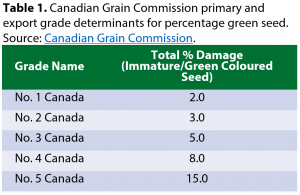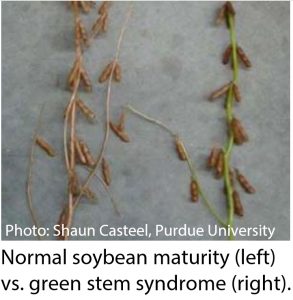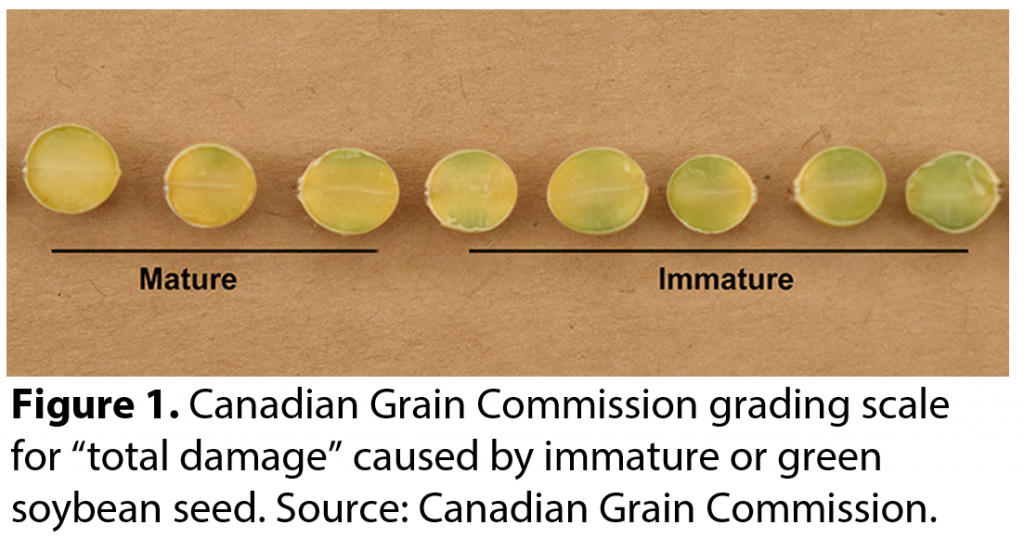Green Seed
Green soybean seed can become an issue when dry conditions occur from July to August. These conditions prevent the enzyme, chlorophyllase, from degrading chlorophyll in the seed (i.e., the process that allows normal colour change).
Chlorophyll in the seed impacts oil quality—a major issue for canola. However, this may be less critical for soybeans, which are grown primarily for meal. To determine if you have a green seed problem, seeds must be cut seeds open crosswise to assess the cotyledon colour (Figure 1). There are two types of green soybean seeds to watch for:
1) Slightly green hull and yellow cotyledons – Dry soybeans that are yellow on the inside and only have a green tinge to the seed coat. These soybeans are designated as mature, graded No. 2 Canada and are not discounted (Figure 1).
2) Green hull and green cotyledons – Dry soybeans that have green colouration throughout the entire seed, which may be locked in (Figure 1). These soybeans are subject to downgrading, depending on the percentage present in the sample (Table 1). Only cleaned samples are graded, meaning shrunken green seeds could potentially fall through sieve openings prior to grading.

What to do about this green seed problem?
- Let the soybeans stand longer in the field. The green colour may not disappear due to minimal enzymatic activity in the dry seed, but can improve somewhat if plants are left standing (Horst Bohner, OMAFRA). Rain can also increase activity of enzymes.
- Harvest areas of the field that are ready and come back for the rest. If pods and puffy yellow or green seeds are making their way into the combine, you may be harvesting too early.
- Take a sample to your buyer before hauling. Consider sending a sample to the Canadian Grain Commission (CGC) for a second opinion, as colour is subjective and there is a fine line between mature and immature seed. Click here to apply for the Harvest Sample Program.
- Do not rely on storage to improve seed colour. A study conducted by OMAFRA and the CGC found little colour improvement after two and five months of storage.
Green Stems

Another issue farmers may be facing this year is green stem syndrome, where soybean pods and seeds are mature, but stems remain green. This makes combining difficult and green material can get mixed with the seed. It is especially concerning when seed moisture is dropping much lower than 14%, which can increase the risk of shattering and losses during harvest.
Both genetics and environment play a role in this condition. Soybean varieties differ in their expression and fluctuating soil moisture after flowering, presence of viruses and ALS inhibitor herbicides can all cause of this condition.
Harvesting seed at the correct moisture is the most profitable option, even if stems are green. Slow travel speeds and sharp cutting knives are also recommended.

